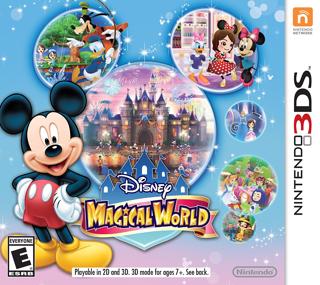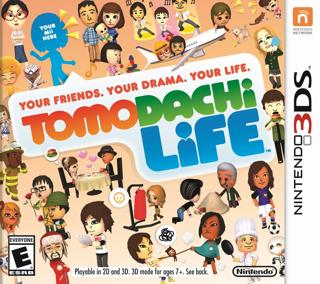Disney Magical World is Full of Surprises

The first is non-gendered outfits. The game has a ton of clothes you can buy or make, and some of it is traditionally male or female. The game doesn’t care, though. It doesn’t distinguish at all. Anyone can wear anything, and nobody bats an eye - the only comments that you’ll get are compliments on your fashion sense if your outfit is coordinated. My character still runs around in pants rather than a dress, but I appreciate that it’s a choice.
It’s especially refreshing after the recent controversy over Tomodachi Life omitting gay relationships. It’s a silly “life simulator” that encourages you to create characters based on yourself and your real-life friends, who can then fall in love and get married - but only in heterosexual arrangements.
“It’s more of an issue for this game because the characters are supposed to be a representation of your real life. You import your personalized characters into the game. You name them. You give them a personality. You give them a voice. They just can’t fall in love if they’re gay."
—Tye Marini as quoted in Nintendo says no to virtual equality in life game

By simply omitting such flags and checks from its clothing options, Disney Magical World is quietly inclusive (of a different group - there are no homosexual relationships in Disney Magical World because there are no relationships at all outside of the canon Disney couples). It was easier to code that way, too.
The second thing that caught my attention is how freemium-like some of the mechanics are - but without the evil. Several of the activities are time-gated - some resources can only be gathered a couple of times per day, it takes a while for your cafe to serve the meals you have prepared, some plants must be watered a few times over the course of an hour or two before they can be harvested. But you never run out of things to do - there are resources and plants that move much faster, and plenty of other activities that are just always available. And just as importantly - you never lose anything. The resources will wait patiently until you show up to gather them. Your cafe won’t suddenly become unpopular because it’s out of food; it just won’t serve any customers until you cook more. The plants won’t wither or die if they go unwatered; they just won’t grow until you do water them. If the game killed your crops and removed your customer base just because you’d had a busy day in real life, you’d be forced to evaluate whether you wanted to start over or whether you wanted to do something else with your time. But since Disney Magical World never punishes you for having other things to do, it’s always pleasant to come back to it.